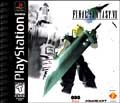according to the documents that the medievil re-enactment group I was a member of a few years back had gotten from some recognised college of knowledge or something along those lines, the way a medievil swords designed for getting through Mail and Plate were sharpened was with a Metal File. You would sharpen the blade on about a 45 degree angle towards the hilt.. This would mean that when you hit someone and DREW the blade back, the blade would TEAR through the chain and any creases etc the impact made in the plate armour. This action was not unlike a hacksaw. Also the wound left in flesh by this kind of blade were not pretty.
What this means is that the blades are not really that sharp. Well.. not razor.. more like a rough edged hacking implement. combining a tear action with an impact action.
As for the way Greatswords, and all the big weapons were carried by Knights (the only ones to really use them).. Well.. that's what your squire and your horse was for. Polearms like a pike were carried in a hand and on a shoulder.. so were most other polearms used by peasants or militia.. Polearms like the Bec de Corbin (a knights weapon I believe) were carried by the squire on a horse etc, and given to the knight when he yelled out something along the lines of "Squire, BRING ME THE POKIE THING NOW!!!"
As for a bibligraphy of the above.. can't say I can give it.. we would need to find somebody who has studied this kind of stuff. I just spent two years hanging around them a few years back.

